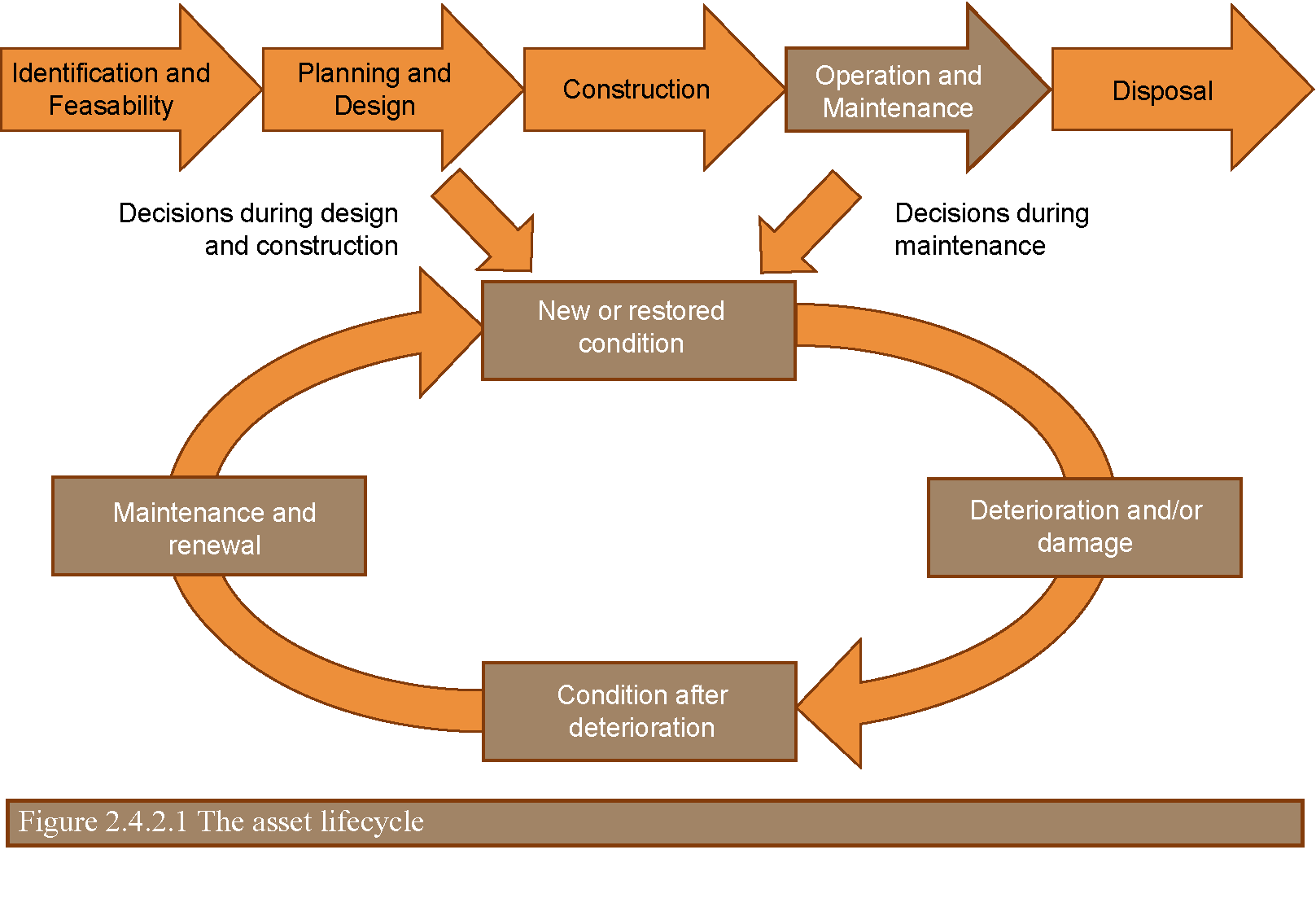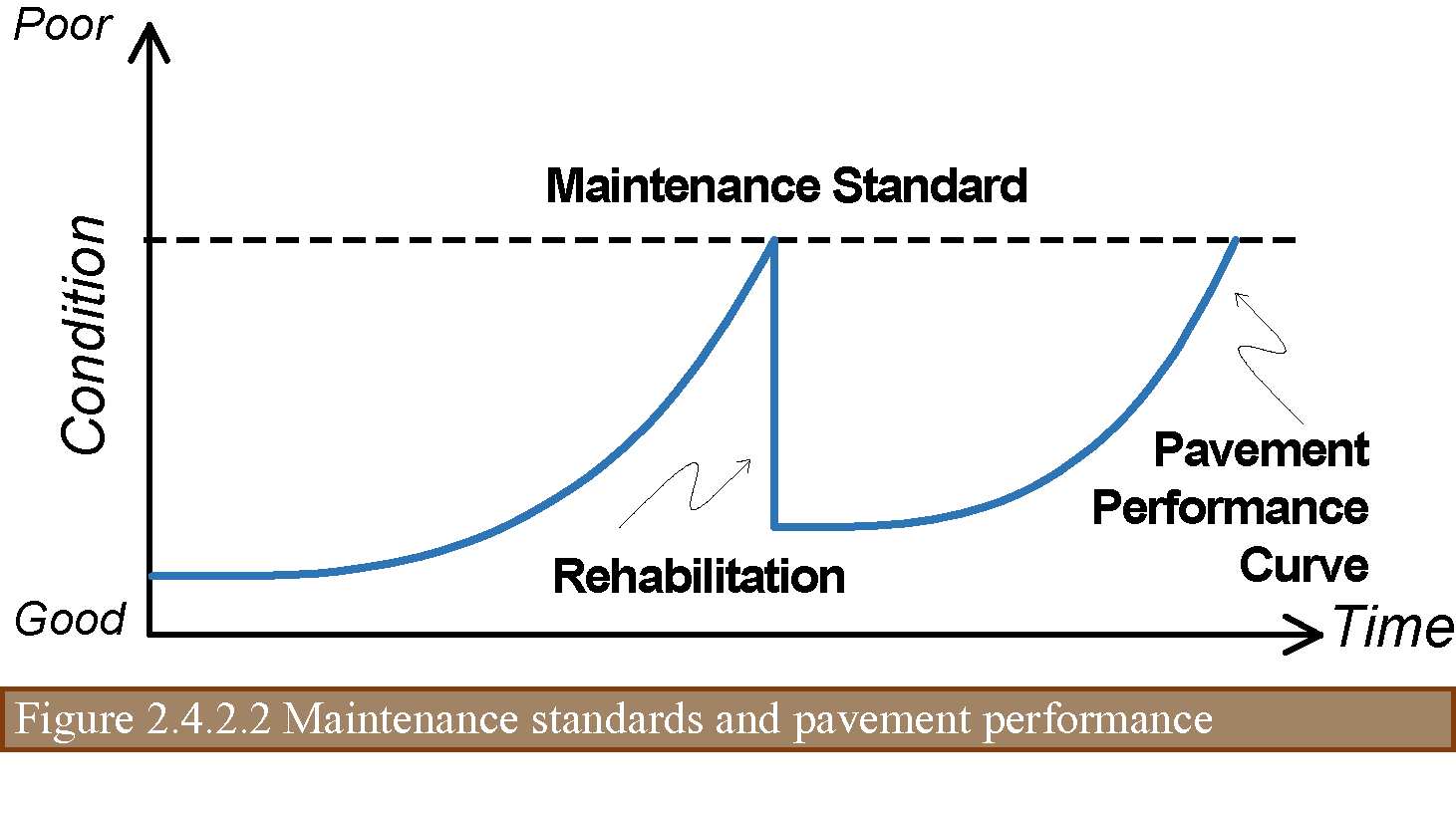
Asset Management Manual
A guide for practitioners!

Asset Management Manual
A guide for practitioners!
Lifecycle planning describes the approach to maintaining an asset from construction to disposal. It involves the prediction of future performance of an asset, or a group of assets, based on investment scenarios and maintenance strategies. The lifecycle plan is the documented output from this process (UKRLG and HMEP, 2013).
Lifecycle plans may be used to demonstrate how funding and/or performance requirements are achieved through appropriate maintenance strategies with the objective of minimizing expenditure while providing the required performance over a specified period of time (PIARC 2000).
Lifecycle planning can be applied to all road infrastructure assets and can adopt a range of basic approaches depending on the maturity of the organization and the skills and capabilities of its staff. However, its application may be more beneficial to those assets that have the greatest value, require considerable funding, and are high risk and/or seen as critical assets. In some cases, complex approaches may be applied, and in these circumstances, higher quality data and predictive modelling techniques will often be needed. Where minimal data are available, a more basic or a risk-based approach may be adopted, as discussed in section 2.3.
The lifecycle of an asset covers the following stages:

Maintenance strategies may be developed that consider different treatment options and balance renewal with routine maintenance. These strategies should take into consideration the service life for each treatment option and balance the costs over a planned period of time. The objective of this process is to provide a lifecycle plan for an asset that will support the implementation of the asset management strategy and objectives. When applying a lifecycle approach, the following questions may be answered for a short-, medium-, and long-term period of planning for each asset:
Adopting a lifecycle planning approach supports organizations in applying the principles of asset management to set maintenance standards that they can afford and/or that are desirable.
The desired performance is determined by setting the maintenance standards through developing performance targets, as described in section 1.4. Current asset performance is assessed through collecting information and data, based on the approach described in section 2.1, and monitoring performance, as described in section 2.2.
Typically, maintenance standards will have been selected for each asset type or group. These standards would normally represent the maintenance thresholds but may vary depending on the maturity of the organization that is applying lifecycle planning principles. It should be recognized that different performance requirements may also be adopted across different network hierarchies. For example, strategic roads may have different maintenance standards than less trafficked rural roads.
Where assets are to be maintained in a steady state, the lifecycle plan should be developed to meet existing performance requirements, as shown in Figure 2.4.2.2.
